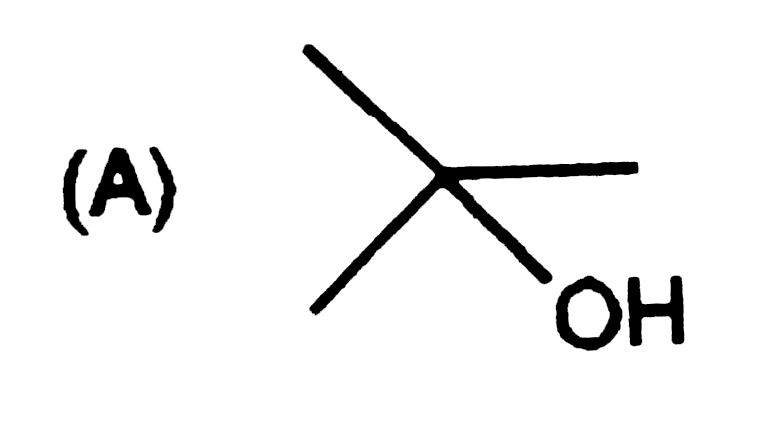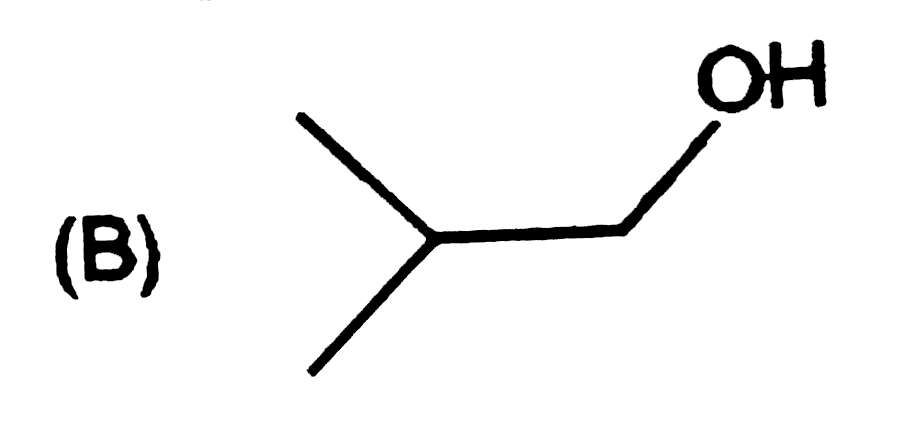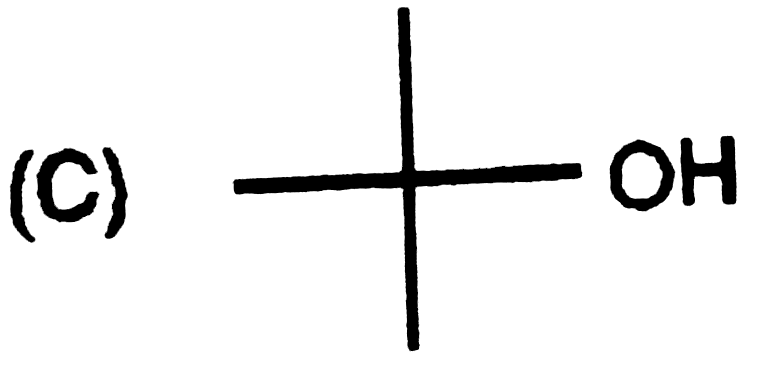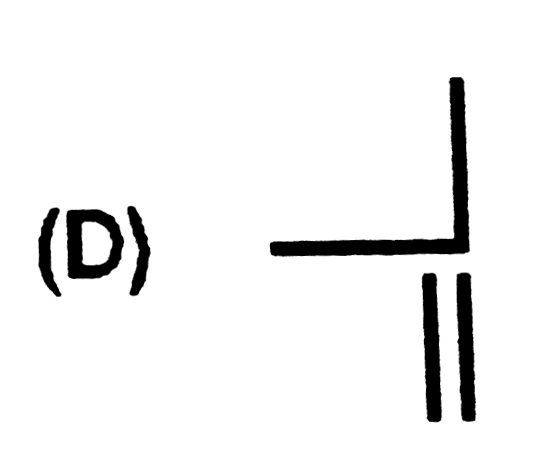Isobutylene on hydroboration followed by reaction with H2O2OH– –
Primary alcohol
Secondary alcohol
Tertiary alcohol
Dihydric alcohol
The correct Answer is:A
To solve the question regarding the hydroboration of isobutylene followed by oxidation with H2O2/OH−, we will follow these steps:
Step 1: Draw the structure of Isobutylene
Isobutylene, also known as 2-methylpropene, has the following structure:
CH2=C(CH3)CH3
Step 2: Perform Hydroboration
In the hydroboration step, isobutylene reacts with diborane (B2H6) to form a trialkylborane intermediate. The reaction follows the anti-Markovnikov addition rule, meaning that the boron atom will attach to the less substituted carbon atom (the carbon with more hydrogen atoms).
The intermediate formed after hydroboration can be represented as:
CH3−CH(BH2)−CH3
Step 3: Oxidation with H2O2/OH−
In the oxidation step, the trialkylborane intermediate reacts with hydrogen peroxide (H2O2) in the presence of hydroxide ions (OH−). The OH− acts as a nucleophile and replaces the BH2 group with a hydroxyl group (OH).
The product after oxidation will be:
CH3−CH(OH)−CH3
Step 4: Determine the Degree of Alcohol
The product formed is 2-propanol (isopropanol), which is a secondary alcohol. This is determined by the fact that the carbon atom bearing the OH group is attached to two other carbon atoms.
Final Structure
The final structure of the product is:
CH3−CH(OH)−CH3
Conclusion
The final product of the hydroboration of isobutylene followed by oxidation with H2O2/OH− is 2-propanol, which is a secondary alcohol.
---
Isobutylene, also known as 2-methylpropene, has the following structure:
In the hydroboration step, isobutylene reacts with diborane (B2H6) to form a trialkylborane intermediate. The reaction follows the anti-Markovnikov addition rule, meaning that the boron atom will attach to the less substituted carbon atom (the carbon with more hydrogen atoms).
In the oxidation step, the trialkylborane intermediate reacts with hydrogen peroxide (H2O2) in the presence of hydroxide ions (OH−). The OH− acts as a nucleophile and replaces the BH2 group with a hydroxyl group (OH).
The product formed is 2-propanol (isopropanol), which is a secondary alcohol. This is determined by the fact that the carbon atom bearing the OH group is attached to two other carbon atoms.
The final structure of the product is:
The final product of the hydroboration of isobutylene followed by oxidation with H2O2/OH− is 2-propanol, which is a secondary alcohol.
Topper's Solved these Questions
- BOOK - MOTIONCHAPTER - HYDROCARBON EXERCISE - Exercise - 2 (Level-I)29videos
HYDROCARBON
- BOOK - MOTIONCHAPTER - HYDROCARBON EXERCISE - Exercise - 314videos
HYDROCARBON
- BOOK - MOTIONCHAPTER - HYDROCARBON EXERCISE - QUESTIONS6videos
HYDROCARBON
- BOOK - MOTIONCHAPTER - GRIGNARD REAGENTEXERCISE - EXERCISE-216videos
GRIGNARD REAGENT
- BOOK - MOTIONCHAPTER - IONIC EQUILIBRUIMEXERCISE - Exercise -4 (Level -II)14videos
IONIC EQUILIBRUIM
Similar Questions
Give the structures of final products expected from the following reactions:
(i) Hydroboration of propene followed by oxidation with H2O2 in alkaline medium.
(ii) Dehydration of (CH3)3C−OH by heating it with 20% H3PO4 at 358k.
(iii) Heating of With HI.View Solution
With HI.View SolutionZn2+ salts appears acidic due to hydrolysis. Identify acid and base in the following reaction [Zn(H2O4]2++H2O→[Zn(H2O)3OH]++H3O+
View Solution
Knowledge Check
- Question 1 - Select One
When isobutylene reacts with dibroane followed by reaction with H2O2, the product is
A B
B C
C D
D
- Question 2 - Select One
Isobutylene when subjected to hydroboration oxidation reaction yields
Asec-Buty alcoholBtert-Butyl alcoholCIsobutyl alcoholDn-Butyl alcohol - Question 3 - Select One
Propene on hydroboration and oxidation produces
ACH3CH2OHBCH3CHOHCH3CCH3CH2CH2OHD(CH3)3COH
In the hydroboration - oxidation reaction of propane with dibrane , H2O2 and NaOH , the organic compound formed is :
View SolutionIn the reaction 2H2O⇔H3O++OH−, water is
View SolutionIn the hydroboration-oxidation reaction of propene with dibroane, H2O2 and NaOH, the organic compound formed is :
View SolutionWhich is false for the following reaction ?
[Cu(H2O)3OH]+A+[Al(H2O)6]3+B→[Cu(H2O)4]2+C+[Al(H2O)5OH]2+DView SolutionWhich are correct for the following reaction?
[Cu(H2O)3OH]+[Al(H2O)6]3→[Cu(H2O)4]2++[Al(H2O)5OH]2+View Solution

